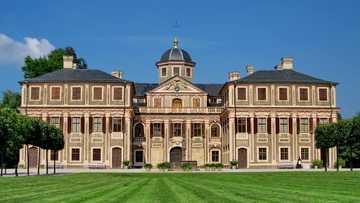Which is the oldest house in the world? Top 12 ancient homes
The history of architecture has been a constant reflection of humanity's evolution. From the ancient stone dwellings of early civilizations to modern man, well-built homes offered a wide range of benefits. The search for the oldest house in the world reveals man's driven quest to find safe and quality habitats.
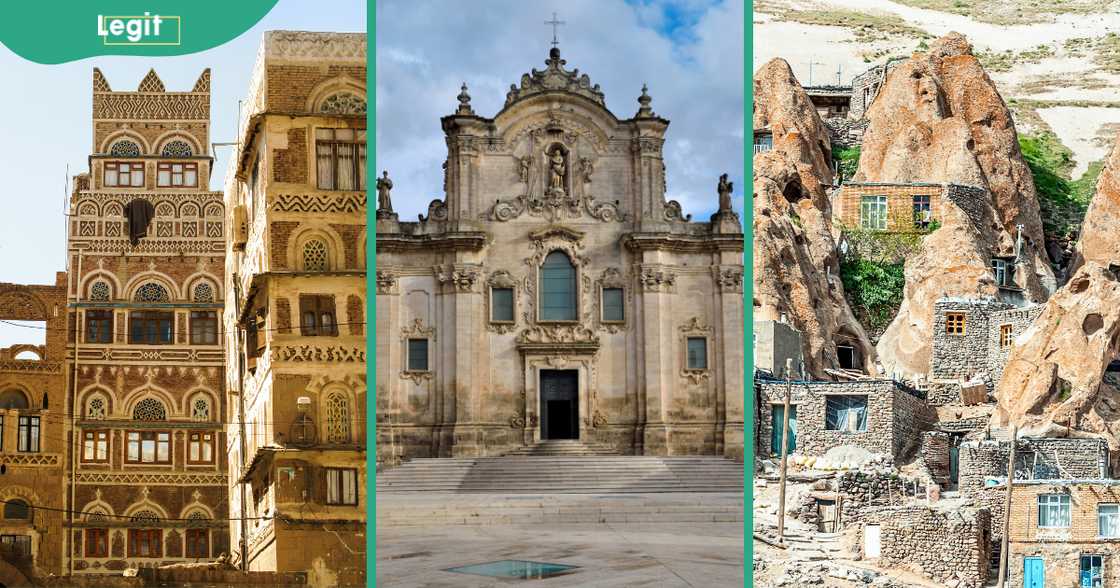
Source: Getty Images
TABLE OF CONTENTS
- Which is the oldest house in the world?
- 1. Cave homes of Meymand (10,000 BC–9,500 BC)
- 2. Çatalhöyük settlements (9,500 BC–7,500 BC)
- 3. Cave dwellings of Sassi di Matera (9,000 BC)
- 4. Howick House (7,800 BC–7,600 BC)
- 5. Khirokitia settlement (7,000 BC–4,001 BC)
- 6. Knap of Howar (3,800 BC–2,800 BC)
- 7. Skara Brae (3,180 BC–2,500 BC)
- 8. The Old City of Sana'a tower houses (476 BC–200 BC)
- 9. Mount Vernon (AD 1734)
- 10. Mark Twain House (AD 1874)
- 11. Finca Vigía (AD 1886)
- 12. The Blackhouse, Arnol (AD 1852–AD 1895)
- Which is the oldest house in the world?
- What is the oldest house in Europe?
- What is the oldest house in the world that is still standing?
This list of the oldest houses in the world was compiled by tracking each archaeological site's history. We have used data from various reputable websites, such as Oldest, UNESCO, and official historic site websites, to compile this list. We analyzed the site's ages, features and livability status to provide a comprehensive picture of the earliest homes still standing.
Which is the oldest house in the world?
The oldest houses in the world have lasted, surviving wear caused by climatic events and human activities. Their resilience has influenced modern architecture and building technologies.
The structures on this list offer an exciting glimpse into different cultures. Below are details of the oldest houses in the world, their history, and current status.
Home | Constructed |
Cave homes of Meymand | 10,000 BC–9,500 BC |
Çatalhöyük settlements | 9,500 BC–7,500 BC |
Cave homes of Sassi di Matera | 9,000 BC |
Howick House | 7,800 BC–7,600 BC |
Khirokitia settlement | 7,000 BC–4,001 BC |
Knap of Howar | 3,800 BC–2,800 BC |
Skara Brae | 3,180 BC–2,500 BC |
The Old City of Sana'a tower houses | 476 BC–200 BC |
Mount Vernon | AD 1734 |
Mark Twain House | AD 1874 |
Finca Vigía | AD 1886 |
The Blackhouse, Arnol | AD 1852–AD 1895 |
1. Cave homes of Meymand (10,000 BC–9,500 BC)
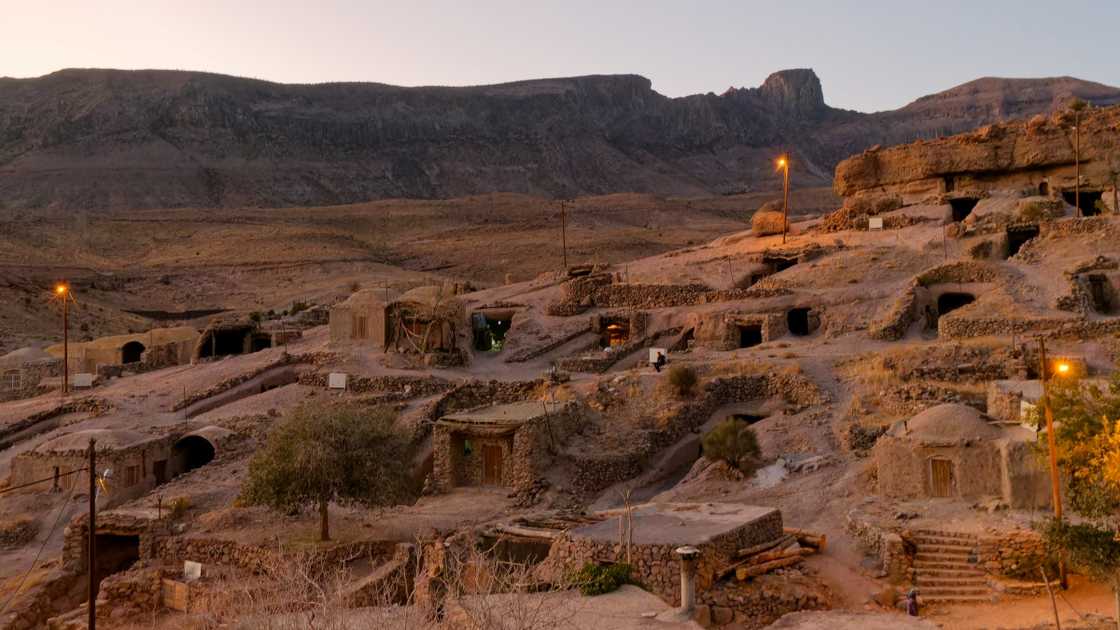
Source: Getty Images
- Age: 12,023–11,523 years as of 2024
- Status: Inhabitable
- Location: Meymand, Shahr-e Babak, Kerman, Iran
- Architect: Aryan tribe
The cave dwellings of Meymand are rock-hewn homes nested in the central mountains of Iran. Some of the homes still inhabited were built by early troglodyte populations with local, pointed stones rather than sharp tools, a technique still used today.
Early inhabitants of the homes are believed to have carved the homes to cope with the harsh weather in the area. Like the cave dwellings of Meymand, Iran is home to another set of cave homes hewn into the slopes of Mount Sahand, the cave village of Kandovan. These homes protected their residents from harsh weather and invasion by warring Mongols.
2. Çatalhöyük settlements (9,500 BC–7,500 BC)
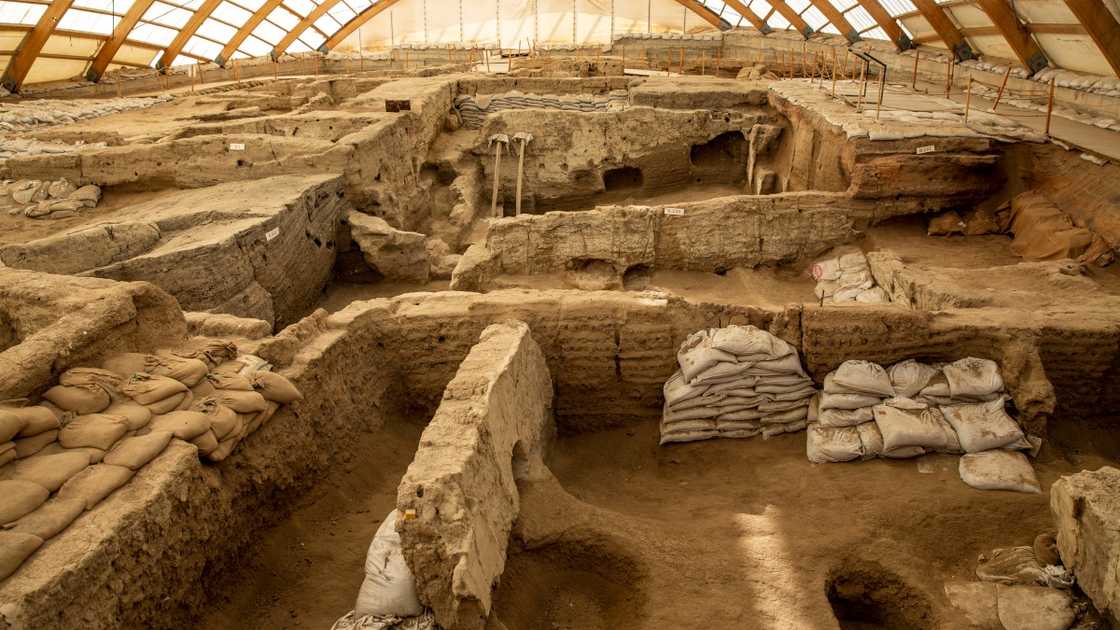
Source: Getty Images
- Age: 11,523– 9,523 years as of 2024
- Status: Uninhabitable
- Location: Küçükköy, Çatalhöyük Yolu, Konya, Türkiye
- Architect: The Natufian people
The Çatalhöyük is a unique Neolithic settlement in the Southern Anatolian Plateau in modern-day Türkiye. In the 37-hectare settlement, occupants had no streets and navigated movement across the town by walking on roofs. They accessed their houses through holes in the ceiling using wooden ladders.
3. Cave dwellings of Sassi di Matera (9,000 BC)
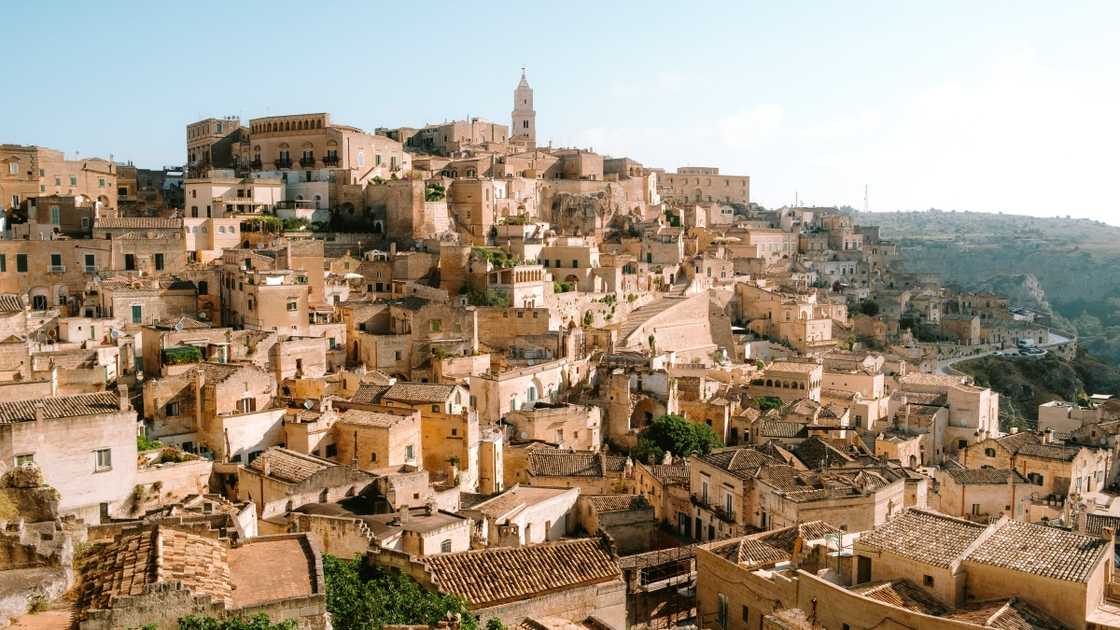
Source: Getty Images
- Age: 11,023 years as of 2024
- Status: Inhabitable
- Location: Matera, Basilicata, Italy
- Architect: The Sassi
According to The Smithsonian, dwellers of the natural caves first occupied them in the Paleolithic Age. The complex maze of houses, churches, monasteries, cemeteries and hermitages is built around the Cathedral atop the Civita hill in the Murgia plateau.
In addition to the troglodyte population, the caves were home to Byzantine monks who added artistic touches to rock-hewn chapels, adorning them with priceless frescoes. The once abandoned ‘shame of Italy’ has attracted a new wave of interest, receiving a UNESCO World Heritage designation in 1993 and the European Capital of Culture in 2019.
4. Howick House (7,800 BC–7,600 BC)
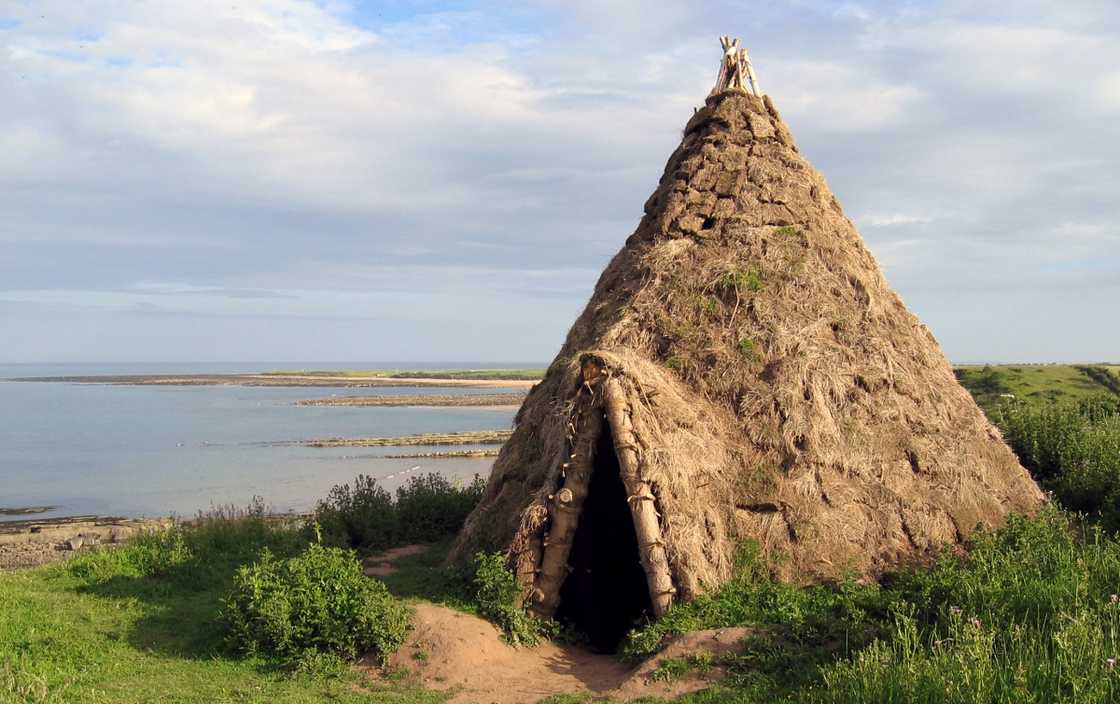
Source: UGC
- Age: 9,823–9,623 years as of 2024
- Status: Uninhabitable
- Location: Northumberland, England
The Howick House is found on a Mesolithic settlement site discovered by an amateur archaeologist, John Davies. The preserved teepee-like grass thatched hut, regarded as Britain's oldest house, is located on a cliff edge of the Northumbrian coast.
5. Khirokitia settlement (7,000 BC–4,001 BC)
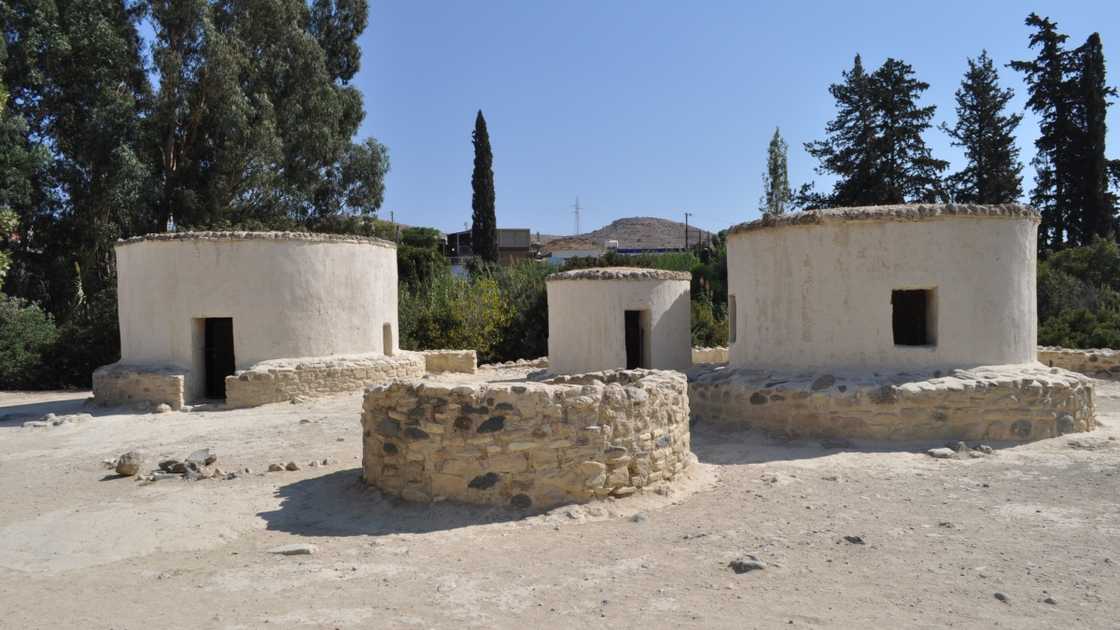
Source: Getty Images
- Age: 9,023–6,024 years as of 2024
- Status: Uninhabitable
- Location: Saint Minas River, Larnaca, Cyprus
Khirokitia or Choirokoitia is a preserved settlement populated between the seventh and fourth millennium BC in the Aceramic Neolithic period. It is located in the loops of the Saint Minas River on the slopes of the Toodos mountain in Larnaca, Cyprus.
The historic Cyprian houses are circular, with flat roofs, and enclosed by elevated walls. They are constructed with stone, adobe, and mud, with roofs made of branches, straw, and mud. The houses also feature fireplaces and chimney-like foramen that helped remove smoke at the centre of the house.
6. Knap of Howar (3,800 BC–2,800 BC)
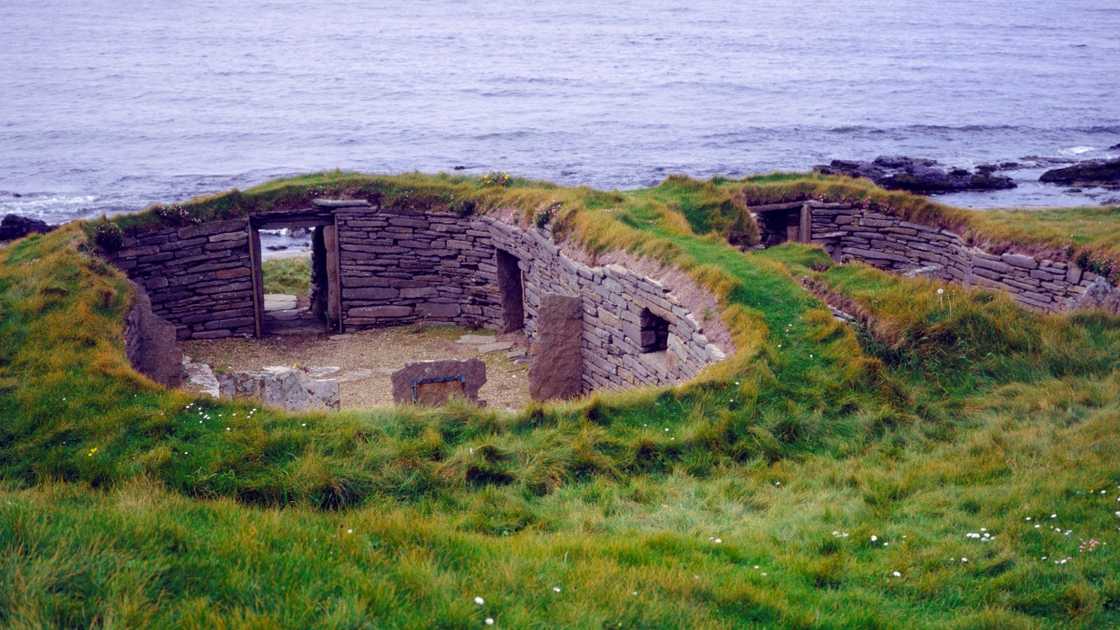
Source: Getty Images
- Age: 5,823–4,823 years as of 2024
- Status: Uninhabitable
- Location: Papa Westray, Orkney, Scotland
- Architect: Early Scottish farmers
The Knap of Howar consists of two excavated and preserved stone buildings believed to have been a farmstead constructed by early Neolithic civilizations. The buildings are located on the northern island of Papa Westray in Orkney, Scotland.
The oblong-shaped Neolithic buildings have stone walls and possibly low thatched or turfed roofs. They feature hearths, benches, cupboards, storage compartments, and stone tools such as grinders.
7. Skara Brae (3,180 BC–2,500 BC)
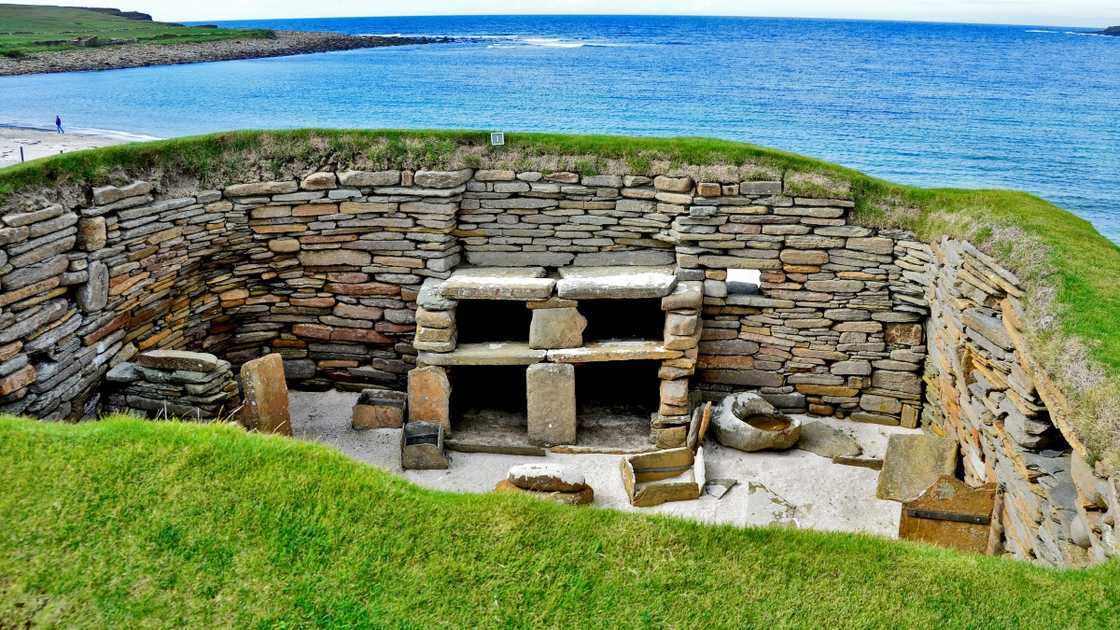
Source: Getty Images
- Age: 5,203–4,523 years as of 2024
- Status: Uninhabitable
- Location: Sandwick, Mainland, Orkney, Scotland
- Architect: The Grooved Ware people
The Skara Brae Neolithic settlement bears a striking resemblance to the Knap of Howar. In 1850, a storm on the Bay of Skaill in Orkney, Scotland, uncovered the village. The preserved stone homes feature high walls, stone beds, dressers, and chairs.
8. The Old City of Sana'a tower houses (476 BC–200 BC)

Source: Getty Images
- Age: 2,499–2,223 years as of 2024
- Status: Inhabitable
- Location: Amanat Al Asimah Governorate, Yemen
- Architect: Shem, son of Noah
Italian poet Pier Pasolini's words best describe the beauty of the Old City of Sana'a. In 1972, the Italian poet and film director said:
From an architectural point of view, Sanaa is the Venice of Arabia.
Towering up to nine stories high, the tower houses feature stone and brick walls and beautiful bistre-coloured walls with geometric patterns. The building technology is specially designed to help residents cope with the area's extreme temperatures.
9. Mount Vernon (AD 1734)
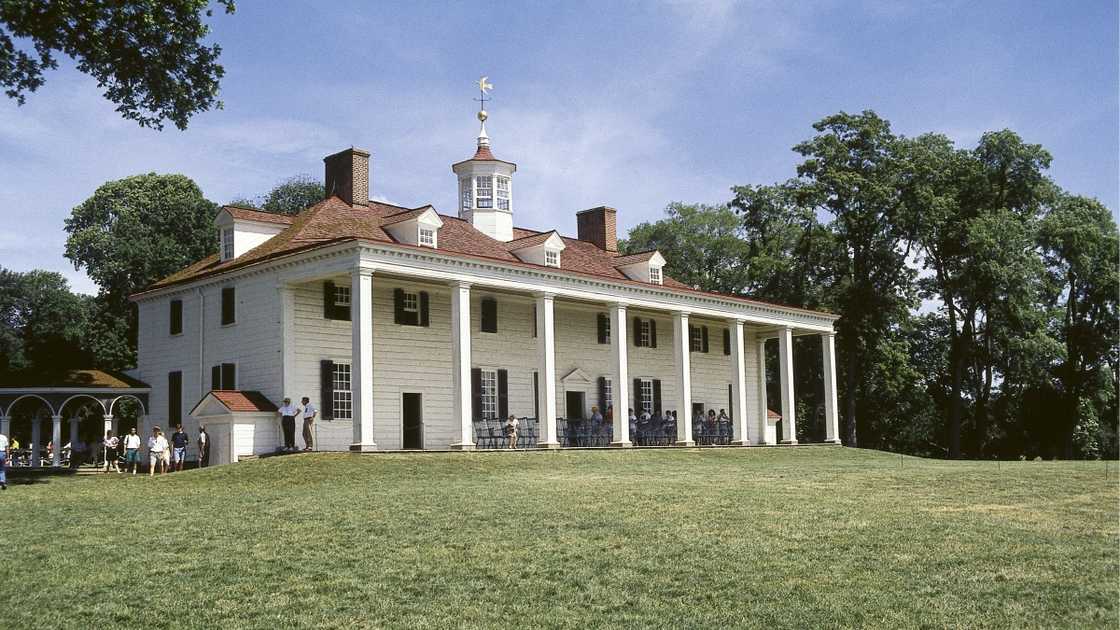
Source: Getty Images
- Age: 290 years as of 2024
- Status: Inhabitable
- Location: Washington, D.C., Alexandria, Virginia, USA
- Architect: George Washington
Former United States President George Washington inherited the Little Hunting Creek Plantation in 1761, which he later named Mount Vernon. The home is ranked among the oldest houses in America still standing.
Aided by 300 enslaved workers on the plantation, the American politician oversaw the renovation of Mount Vernon into a two-and-a-half-story, 11,028-square-foot home with twenty-one rooms. The 8,000-acre property also features gardens, farms, and outbuildings.
10. Mark Twain House (AD 1874)
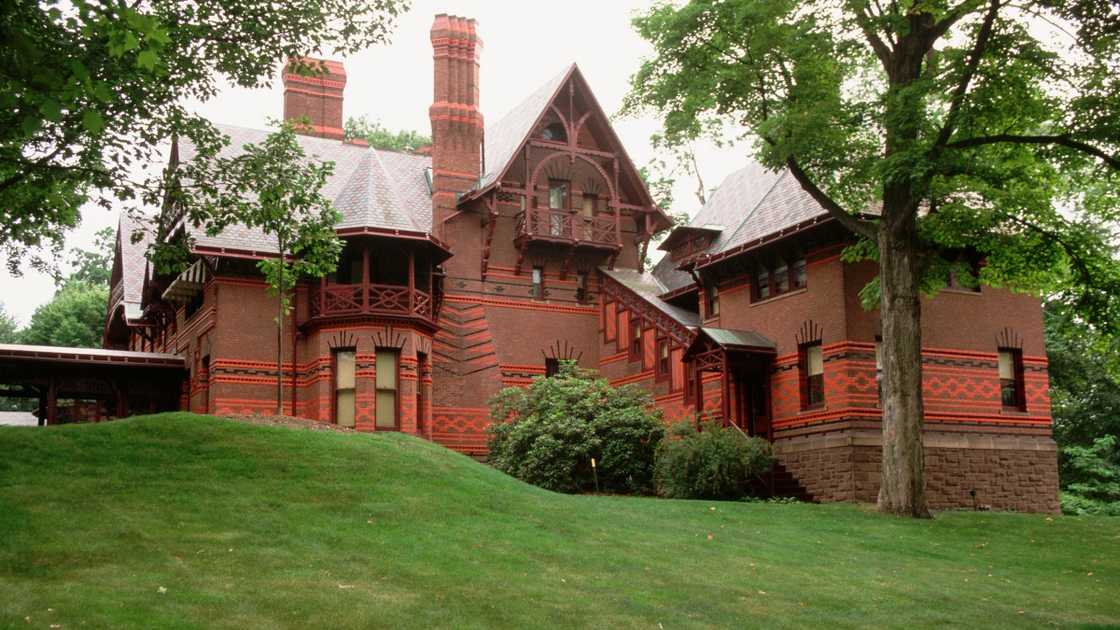
Source: Getty Images
- Age: 150 years as of 2024
- Status: Inhabitable
- Location: Farmington Avenue, Hartford, Connecticut, USA
- Architect: Edward Tuckerman Potter
In 1873, Mark Twain, who wrote The Adventures of Tom Sawyer and The Adventures of Huckleberry Finn, and his wife, Olivia Clemens, began building their Gothic Revival, Stick-style home, spending between $44,000 and $45,000.
The three-storey home that has been restored and turned into a museum has 25 rooms decorated by Louis C. Tiffany & Co. Associated Artists. Fans can also visit the family's revived garden on the property, now known as the Mark Twain House gardens and conservatory.
11. Finca Vigía (AD 1886)
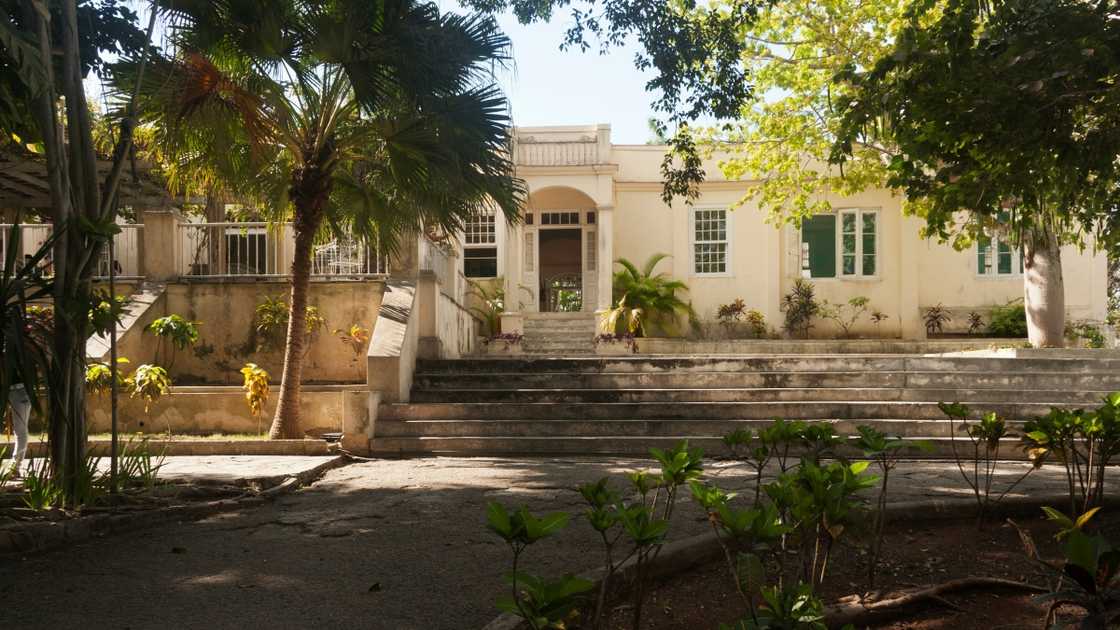
Source: Getty Images
- Age: 138 years as of 2024
- Status: Uninhabitable
- Location: San Francisco de Paula, Havana, Cuba
- Architect: Miguel Pascual y Baguer
Finca Vigía is one of the oldest houses in the world that is still livable and bears significant historical importance. Finca La Vigía is a 61,000-square-metre property that features a two-story guest house and a single-storeyed main house, with a living room, dining room, bedroom, study, bathroom, a pool, a tennis court,
The house was long owned by Pulitzer Prize and Nobel Prize for Literature winner Ernest Hemingway. The house, which has been turned into a museum, served as the writer's residence while he wrote For Whom the Bells Tolls, The Old Man and the Sea, and others.
12. The Blackhouse, Arnol (AD 1852–AD 1895)
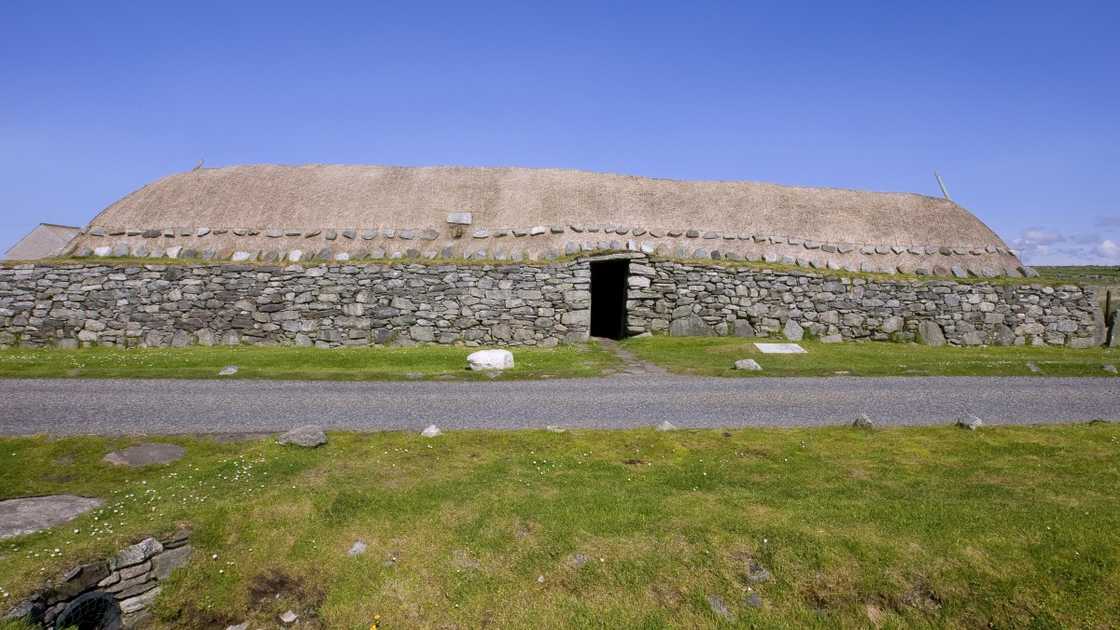
Source: Getty Images
- Age: 172 years–129 years as of 2024
- Status: Uninhabitable
- Location: Arnol, Bragar, Isle of Lewis, Scotland, United Kingdom
- Architect: A Hebridean crofting family
The Blackhouse, or thigh in Gaelic in Arnol, is the only preserved Hebridean Blackhouse. These oval-shaped stone houses housed people and their animals.
Dwellers warmed up with a central peat fire that was never allowed to go out. Smoke from the peat fire rose through the thatched roof, coating the turf black. In the 1900s, the blackhouse dwellers replaced them with white houses or taigh-geal.
Which is the oldest house in the world?
The oldest house in the world is located in the caves of Meymand. It has been occupied since 12,000 years ago and is still inhabited today. Here is a list of other ancient castles, houses and settlements worldwide.
- Anne Frank House — AD 1635
- De Vargas Street House — AD 1610
- Skaill House — AD 1620
- Villa La Rotonda — AD 1580
- 25 Manzanares — AD 1500-AD 1600
- Maison de Jeanne — AD 1400–AD 1500
- Saltford Manor — AD 1160
- Acoma Pueblo's sky city — AD 1150
- Kirkjubøargarður — AD 1000-AD 1100
- Taos Pueblo adobe houses — AD 1000
What is the oldest house in Europe?
The Caves of Sassi di Matera are considered the oldest dwellings in Europe. At the time of writing, they have been re-established as tourist attractions and homes.
What is the oldest house in the world that is still standing?
Tower houses in the Old City of Sana'a have withstood the test of time. The five—to nine-story-high brick and stone buildings date back to Shem, the son of Noah. Other than the cave dwellings of Sassi di Matera and Meymand, the tower houses are also the oldest houses in the world still in use.
The oldest house in the world defies almost all agents of deterioration and lends to the development of modern construction. Built with simple tools, the cave homes of Meymand and others on this list have stood the test of time.
Legit.ng has published an article on the oldest YouTube videos. YouTube is the largest video-sharing and social media platform, attracting billions of users and content creators.
For nineteen years, billions of users around the world have enjoyed YouTube's publicity and reach and content creators and content consumers. Read on for a deep dive into YouTube's history and the earliest videos uploaded on it.
Source: Legit.ng







